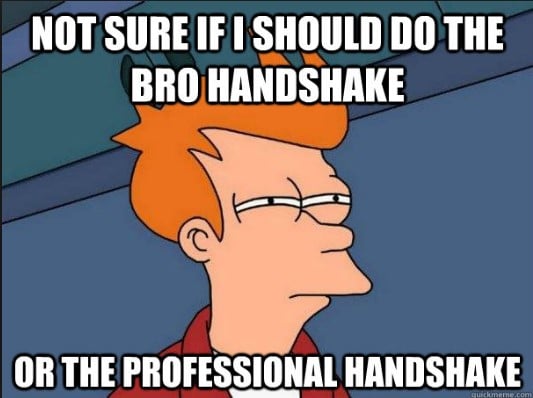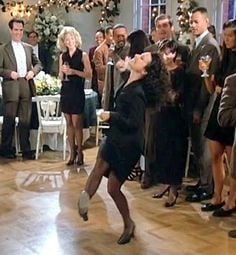Sophie Pilon, Account Supervisor
As the saying goes, we don’t have a second chance to make a good first impression. To be exact, research tells us it’s more like 4 seconds; that’s how quickly we form judgments about others after an initial introduction. It’s another 30 seconds before that judgment is almost entirely finalized.
One of the many exciting components of my job is pitching and meeting with clients – from pitching a new idea or closing a deal with a client. Public speaking and presenting in front of a group of people re skills every public relations practitioner should perfect if they want to be successful. In light of that, I’ve decided to put together a list of tips on body language to make a lasting good impression.
- Smile! You are on camera.
Try walking down the street smiling at strangers. You will quickly realize that people will smile back at you… crazy, right? A genuine smile not only stimulates your own sense of well-being, it also tells those around you that you are approachable, cooperative and trustworthy. By walking into a room with a bright and cheerful smile, you will not only effect your own mood, but also the general excitement of the other people in the room.
- Shake it like you mean it!
Have you ever watched videos of awkward handshakes? It can be funny, but you really don’t want to be on the tail end of an awkward handshake.
Don’t minimize the importance of a good handshake in the workplace. The optimal business handshake strikes a balance between a forceful grip and a limp noodle. The extended hand should fully engage with the other person’s hand for the most impact. Weak handshakes that only grip fingertips may make a negative impression. Likewise, a break-your-fingers-style handshake presents an overly aggressive stance. How you shake hands provides subtle nonverbal cues about your personality and business style. In addition, when you shake someone’s hand, make sure to look them in the eye. That small gesture exudes immense confidence.
- Channel your inner Beyoncé by power posing
My husband brought this to my attention a couple of years ago when I mentioned that public speaking sometimes made me nervous. He said he read an article saying you should always do power poses before going into important meetings and presentations. Power posing is basically believing how we stand can change our own confidence level, improve other’s perception of us as leaders, and directly impacting the success of our interpersonal exchanges.
Prepping for meetings with power posturing combined with some positive self-talk can make huge strides in remembering to keep your physical presence top of mind during the pitch. Before every big meetings I have, I always escape for a couple of minutes in the bathroom and channel by inner Beyoncé. I stand as tall as I can, roll my shoulders back, take a few deep breathes and remind myself that I am ready! If I have time (and I’m wearing the appropriate attire) I might even do a warrior pose. By walking into a meeting feeling calm and self-confident, you will radiate determination and poise, characteristics that clients are looking for from their PR professional.
Watch Amy Cuddy’s TED Talk on body language.
- Dress to impress
On the first day of my first professional job, by boss told me that when working in PR what you wear is very important: it’s a direct reflection of who you are and the work you do.
Clothes do make a difference in how we perceive ourselves, and how others perceive us. It’s important to wear clothes that make you feel comfortable and confident and fit right. It’s also about sending the right message to the people you are with. You can boost your confidence about yourself and your attire when you dress appropriately for the occasion, know the audience and reflect your personal style.
- Stop fidgeting
We all have nervous ticks – rocking back and forth, bouncing feet, throat-clearing, or twirling your hair. Fidgeting distracts from what you are trying to communicate and puts the focus on your ticks, rather than your dazzling expertise. Don’t be that person that looks like Elaine from Seinfeld on the dancefloor. Fidgeting is an obvious sign of anxiety and nervousness and sends the message loud and clear that you aren’t self-assured.
–Sophie Pilon is a seasoned public relations practitioner who has worked with a variety of companies, professional and amateur sport teams and not-for-profit organizations. Sophie’s strength lies in creating tailored strategic communications and media relations plans delivered to each client and their needs.





